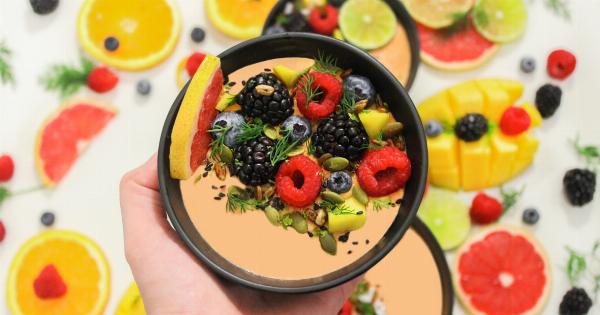Smoothies have gained immense popularity in recent years as a convenient and nutritious way to start your day or refuel after a workout. Packed with fruits, vegetables, and other nutritious ingredients, smoothies can offer a plethora of health benefits.
However, if not prepared and consumed mindfully, smoothies can quickly become a hidden source of excess calories, added sugars, and unhealthy fats. In this article, we will explore some common unhealthy smoothie habits that can contribute to weight gain and provide tips on how to make healthier choices.
1. Excessive Fruit Consumption
Fruits are undeniably healthy and contain essential vitamins, minerals, and fiber. However, it’s important to remember that fruits also contain natural sugars.
Consuming an excessive amount of fruits in your smoothie can significantly increase your calorie intake and contribute to weight gain. Instead of using several types of fruit, stick to one or two servings in your smoothie to keep the sugar content in check.
2. Ignoring Portion Sizes
Portion control plays a vital role in maintaining a healthy weight, even when it comes to smoothies. It’s easy to get carried away with smoothie ingredients, resulting in a calorie bomb.
To avoid overindulging, use measuring cups or a kitchen scale to portion out the ingredients. Stick to recommended serving sizes for fruits, vegetables, yogurt, nut butter, and other add-ins to keep your smoothie’s calorie count in check.
3. Adding Sweeteners
Many people often add sweeteners such as honey, maple syrup, or agave nectar to enhance the taste of their smoothies. While these natural sweeteners may seem healthier than refined sugar, they still contribute to overall calorie intake.
Try using naturally sweet ingredients like ripe bananas, dates, or berries instead. These fruits add the desired sweetness without the need for additional sweeteners.
4. Too Many Healthy Fats
Healthy fats, such as avocado, nuts, and nut butter, can provide numerous nutritional benefits. However, they are also calorie-dense. Adding too many fats to your smoothie can increase its calorie content substantially.
Keep portion sizes in mind and opt for small amounts of healthy fats to maintain a balanced smoothie.
5. Skipping Protein
Protein is crucial for maintaining muscle mass, promoting satiety, and supporting weight management. While fruits and vegetables form the bulk of many smoothies, protein is often neglected.
Adding a source of protein, like Greek yogurt, tofu, or protein powder, can help keep you feeling full and satisfied for longer. It also aids in muscle recovery after exercise.
6. Balancing Macronutrients
A balanced smoothie contains an appropriate ratio of macronutrients – carbohydrates, protein, and fats. Neglecting any of these components can lead to an imbalanced smoothie that may leave you feeling hungry soon after consumption.
Aim for a balance by incorporating a variety of fruits, vegetables, a source of protein, and a small amount of healthy fats.
7. Using Fruit Juice as a Base
Using fruit juice as the base for your smoothie may seem like a healthy choice, but it can quickly spike the sugar content. Many commercially available fruit juices are loaded with added sugars and lack the fiber present in whole fruits.
Instead, opt for a liquid base like unsweetened almond milk, coconut water, or plain water to keep your smoothie both nutritious and low in sugar.
8. Neglecting Fiber
Fiber plays a vital role in gut health, digestion, and promoting feelings of fullness. Unfortunately, many smoothie recipes neglect fiber-rich ingredients.
To increase the fiber content of your smoothie, consider including ingredients like chia seeds, flaxseeds, oats, or leafy greens. These additions not only boost fiber but also provide added nutrients and texture.
9. Relying on Store-bought Smoothies
Store-bought smoothies may seem like a convenient option, but they often contain added sugars, artificial flavors, and preservatives. Additionally, the portion sizes may be larger than recommended.
It’s always best to prepare your smoothies at home using fresh and whole ingredients. This way, you have control over the ingredients and can customize them to suit your tastes and nutritional needs.
10. Overlooking Liquid Calories
While it’s easy to focus on the solid ingredients in a smoothie, it’s important not to overlook the liquid calories.
Additions like flavored yogurt, fruit concentrates, or sweetened milk alternatives can significantly increase the calorie and sugar content of your smoothie. Opt for unsweetened versions of these ingredients or choose lower-calorie liquid bases to keep your smoothie healthier.






























